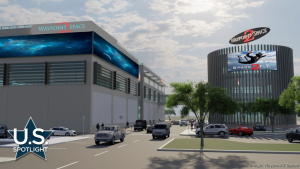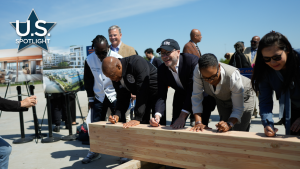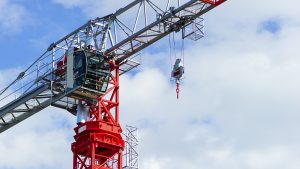The pandemic is speeding up structural problems in the retail industry, not creating new ones for the beleaguered sector.
“Most of the things you have seen, such as bankruptcies, are an acceleration of a trend,” according to Nick Egelanian, president of SiteWorks, a retail real estate company that provides market analysis in North America.
A panellist to an Urban Land Institute webinar on the recovery of retail in North America after the pandemic, Egelnian said that most American regional shopping malls will be gone in five to seven years.
He said some are now repurposing portions as “fulfillment centres” or retail warehouses for online shopping.
The landscape is different in Canada, however, for major retail landlords like Cadillac Fairview (CF).
Its shopping mall portfolio remains relatively healthy despite the pandemic.
While it has seen bankruptcies, most of their retail remains open in some form.
Overall, occupancy rates remain high and the future looks “good for the long haul,” Josh Thomson, senior vice-president of development at CF, told the panel.
That, however, doesn’t mean mall developers like CF are sitting pat.
“We are looking at diversifying our assets with more community benefits like adding residential, entertainment, restaurants, offices,” he said. “These are things you wouldn’t see in a regional shopping mall 10 to 15 years ago and we see that as being the trend in the future.”
He said residential development, for example, in both suburban and urban malls in some Canadian cities is “a real opportunity” for some landlords.
CF will start construction this year on 2,000 residential units at a suburban shopping mall in Richmond, B.C., south of Vancouver where “sales have been great,” he added.
The hitch, he said, is that it has taken five years to get the green light for the redevelopment. Hurdles include a time-consuming rezoning process, shifting from retail to residential.
It is “a big financial burden” and takes “very savvy landlords” to do the conversions, Thomson told the webinar.
Still, he said planners in Canada are becoming comfortable with the changing face of shopping centres in Canada.
“We need to do things differently and it is not necessarily great to have 5,000 empty parking stalls.”
The “tug of war” between planners and developers is over such issues as the type of housing planned, transit links, public space provided and a host of other amenities and features, he added.
Egelnian said getting the approval for incremental developments such as multi-unit residential to portions of U.S. malls is “many times harder than in Canada” in part because most U.S. malls don’t have high-density existing housing nearby.
Thomson said often the decision to demolish “boxes” or anchors in a mall is sensible because the 30 to 40-year-old sections are not practical to renovate and replacing an anchor with an anchor is long past being financially wise.
While residential is a feasible replacement for some malls, he said, restructuring decisions are made on a case-by-case basis at CF.
Thomson pointed out the pandemic has helped the company to be open and flexible with its retailer client base.
“Hopefully that is going to be a benefit as we pivot some of the shopping centres into a different direction, as we make them more into community centres. The shopping centres surviving in the next 10 years are going to be places that everyone goes to, not one specific customer.”
Egelnian said the decline of regional shopping malls in the U.S. is tied to a surge in commodity retail such as specialty retail services, not internet shopping, as many people believe.
“As we built these departments outside department stores we basically killed the department store business,” he stated.
He added mall construction was strong from the 1960s to the ’90s until strip centres (big box) started taking over in the 1990s.










Recent Comments